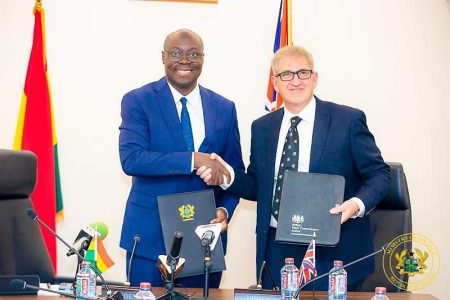George Lutterodt’s critique of Ghana’s emergency response system, sparked by the tragic military helicopter crash in the Ashanti Region, underscores a critical vulnerability within the nation’s disaster preparedness infrastructure. His assertion that the incident serves as a “wake-up call” highlights the urgency of addressing the systemic deficiencies impeding effective emergency management. Lutterodt’s primary concern revolves around the apparent lack of seamless coordination between key emergency responders, specifically the Ghana Police Service and the Ghana National Fire Service. This disconnect, he argues, represents a significant impediment to timely and efficient disaster response, potentially exacerbating the consequences of such incidents. His call for immediate action reflects the gravity of the situation and the need for a comprehensive overhaul of the existing emergency response protocols.
Delving deeper into Lutterodt’s critique, it becomes evident that his concerns extend beyond the immediate aftermath of the helicopter crash. He identifies a systemic issue within Ghana’s emergency response framework, where the absence of a robust, integrated communication and coordination mechanism between the police and fire services hampers their ability to effectively collaborate during emergencies. This lack of interoperability, he suggests, creates confusion, delays, and potentially compromises the efficacy of rescue and relief efforts. The consequence, as highlighted by the helicopter crash, is a heightened risk of casualties and a diminished capacity to mitigate the overall impact of disasters. Lutterodt’s observations point to a larger problem – the potential for similar inefficiencies and coordination breakdowns in other emergency scenarios, emphasizing the need for a more comprehensive and proactive approach to disaster preparedness.
The essence of Lutterodt’s argument lies in the imperative for a more integrated and streamlined emergency response system. He advocates for the establishment of a clear chain of command and communication protocols that facilitate seamless collaboration between the police and fire services, ensuring that both entities can operate in unison during crises. This integrated approach, he posits, would enable a more rapid and coordinated response, minimizing delays and maximizing the chances of successful rescue and recovery operations. Furthermore, it would create a more efficient allocation of resources, preventing duplication of efforts and ensuring that all available assets are deployed strategically to address the specific needs of the emergency. Lutterodt’s emphasis on the need for immediate action underscores the urgency of this issue, suggesting that any delay in implementing these reforms could have dire consequences in future emergencies.
Expanding on the need for a more robust emergency response system, Lutterodt’s critique can be seen as a call for a comprehensive review of Ghana’s disaster preparedness strategies. This review should encompass not only the operational aspects of emergency response, such as communication protocols and inter-agency coordination, but also the broader framework for disaster management, including risk assessment, mitigation planning, and community education. A holistic approach, he implies, is crucial to addressing the root causes of the current vulnerabilities and building a more resilient and responsive system. This would involve investing in training and equipment for emergency responders, establishing clear lines of authority and responsibility, and fostering a culture of preparedness within the community.
Furthermore, Lutterodt’s concerns resonate with the wider discourse on disaster management, emphasizing the importance of proactive planning and preparation. He implicitly argues that reacting to disasters after they occur is insufficient; instead, a proactive approach that anticipates potential risks and implements preventative measures is essential. This includes identifying vulnerable areas, developing contingency plans, and investing in early warning systems. By focusing on prevention and mitigation, Lutterodt suggests, Ghana can significantly reduce the likelihood of future disasters and mitigate their impact when they do occur. His call for action extends beyond the immediate concern of inter-agency coordination to encompass a wider range of disaster preparedness measures, including public awareness campaigns, community-based disaster risk reduction initiatives, and the development of comprehensive national disaster management plans.
In conclusion, George Lutterodt’s critique of Ghana’s emergency response system, though triggered by a specific incident, serves as a broader commentary on the nation’s disaster preparedness capabilities. His concerns about the lack of coordination between the police and fire services highlight a critical vulnerability within the system, emphasizing the need for immediate action to establish more effective communication and collaboration mechanisms. Beyond this specific issue, Lutterodt’s call for a “wake-up call” resonates with the broader need for a more proactive and comprehensive approach to disaster management in Ghana. This includes investing in training, equipment, and technology, developing clear protocols and lines of responsibility, and fostering a culture of preparedness at all levels of society. By addressing these systemic issues, Ghana can strengthen its resilience to disasters and ensure that its emergency response system is equipped to effectively protect its citizens in times of crisis.














